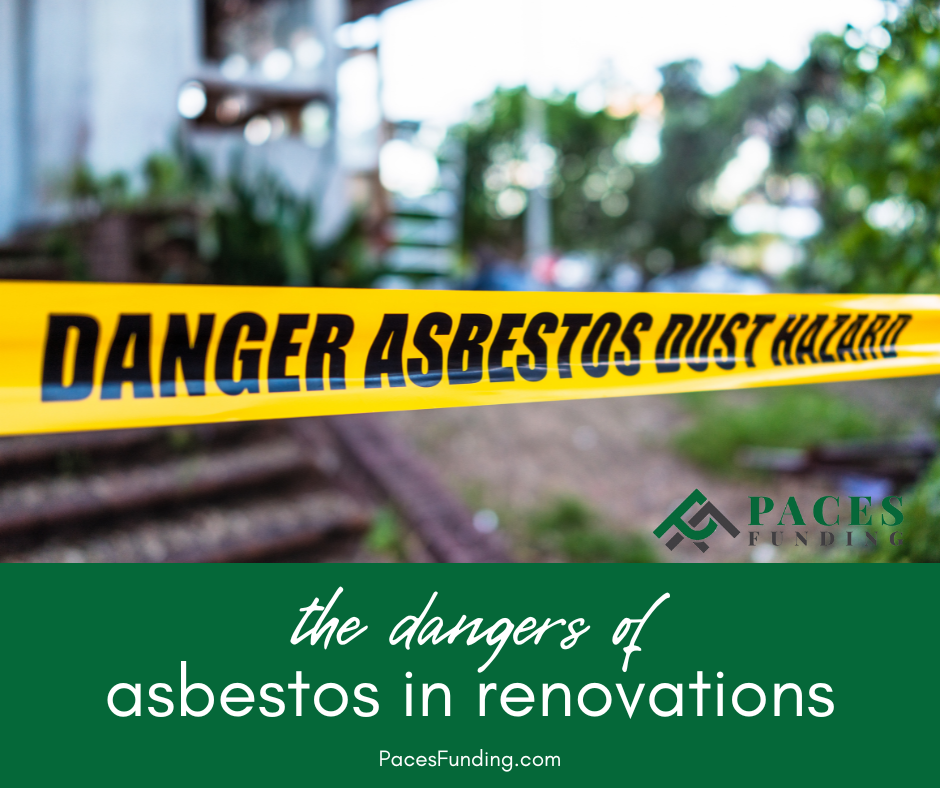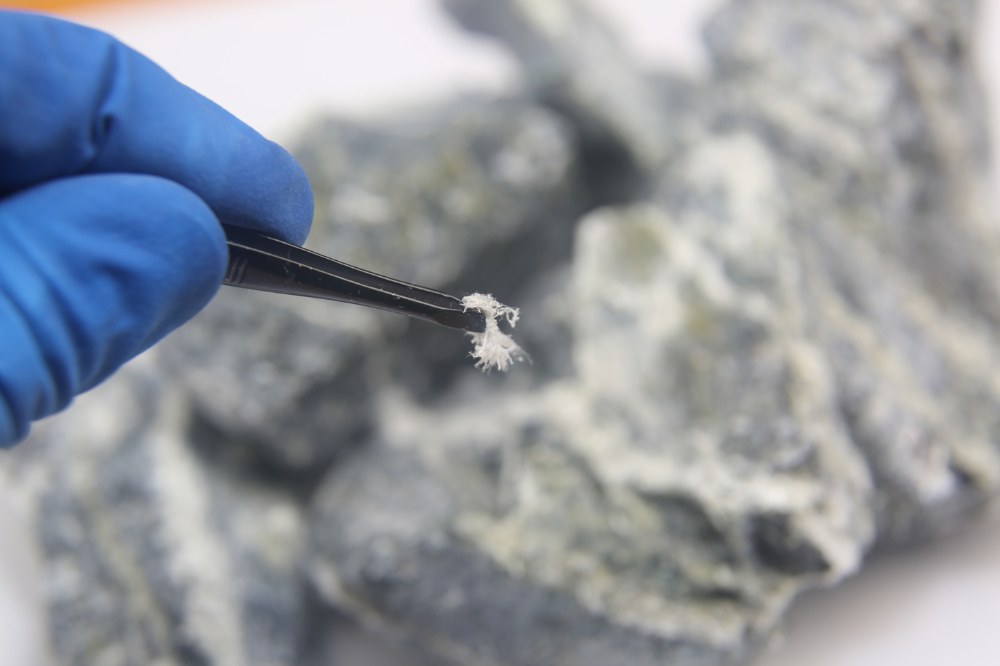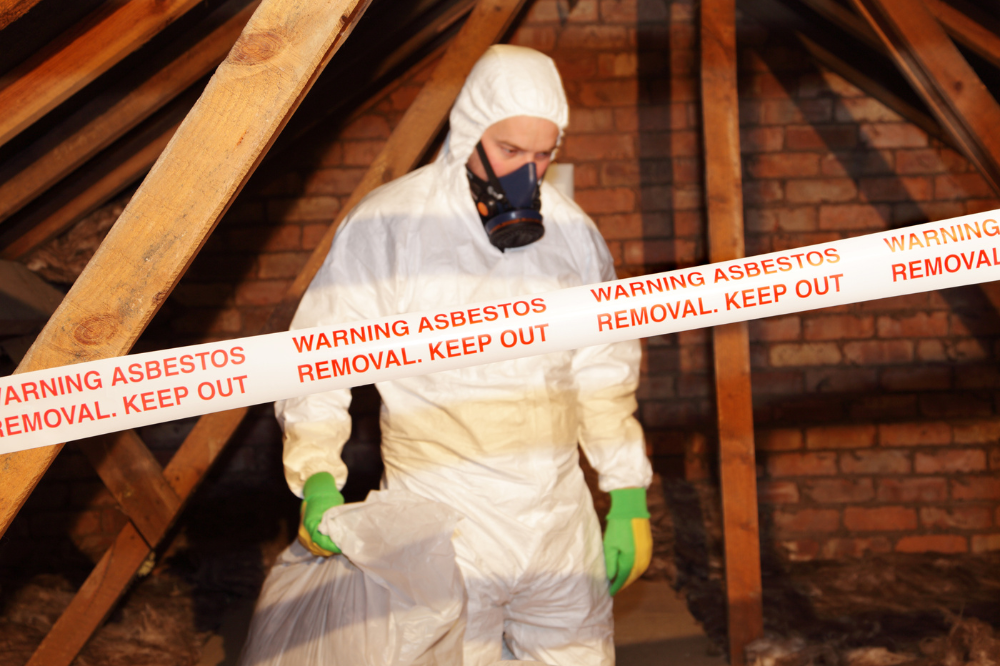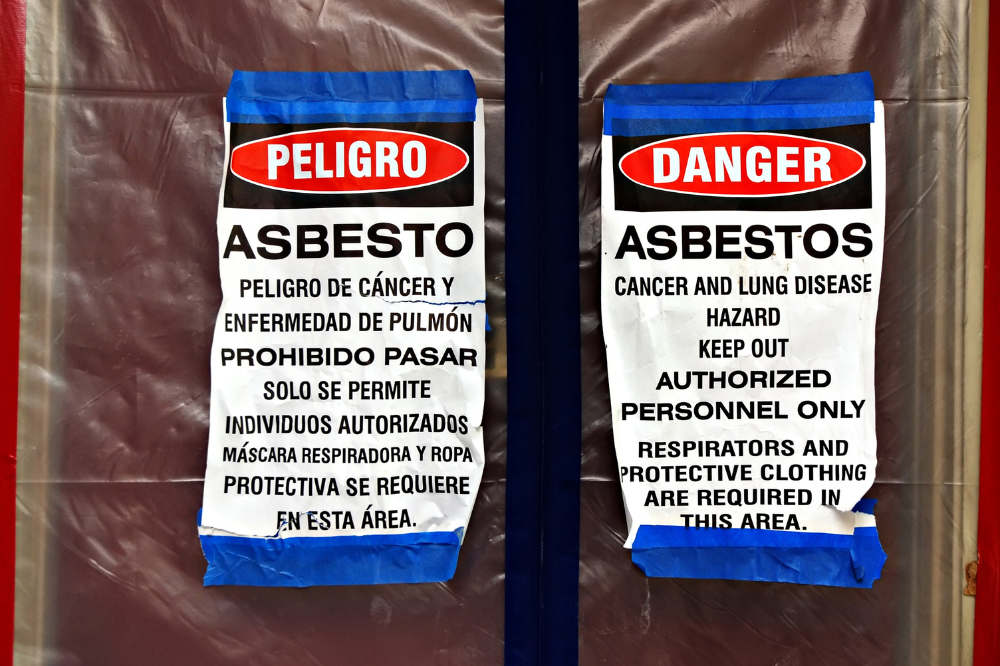
Asbestos in Renovation Work: What You Need to Know
Investing in real estate often means dealing with older properties, and with those comes the potential issue of asbestos. Hidden within walls, under floors, and in attic insulation, asbestos poses significant dangers during renovation work. This guide aims to help you navigate these risks while maximizing your investment returns.
The Dangers of Asbestos in Renovation Work
In this guide, you’ll learn about:
- What asbestos is
- Why it’s a problem
- How to identify asbestos
- How to handle and remove asbestos
- Resources for managing asbestos
The following sections explain.
What is Asbestos?
Asbestos is a group of naturally occurring minerals used extensively in building materials for their fire-resistance, insulation properties, and strength. Mostly used in properties built before 1980, it’s frequently found in insulation, ceiling tiles, siding, and roofing materials.
Related: What do you need to take out a hard money loan this year?
Why Did Builders Use Asbestos in Construction?
Asbestos was a popular building material due to its abundance, affordability, and unique properties. Here’s why builders used asbestos in renovations and construction:
- Durability: Asbestos is incredibly long-lasting. It’s resistant to wear and tear, which made it perfect for parts of the home that experience a lot of use or could be damaged, like floor tiles and roofing.
- Fire resistance: Asbestos is non-flammable, which made it highly desirable in construction. Builders used asbestos in insulation, fire doors, and around pipes and boilers to prevent fires from spreading.
- Insulation properties: Asbestos has excellent insulation properties. It was used to insulate homes against cold weather and noise. It was also used around pipes and boilers to prevent heat loss.
- Chemical resistance: Asbestos is resistant to most chemicals, meaning it won’t degrade when exposed to cleaning products or other household chemicals.
- Strength: When mixed with other materials, like cement or plastic, asbestos adds strength without adding much weight. This was useful in a variety of applications, including panels, siding, and even window frames.
However, it wasn’t until years later that the serious health risks associated with asbestos became widely recognized. Today, asbestos use is heavily regulated due to the danger it poses when its fibers are inhaled. Despite its practical properties, the health risks far outweigh the benefits of using asbestos in renovations and construction.
Why Asbestos Is a Problem
When left untouched, asbestos isn’t typically harmful. The problem arises when renovation work disturbs asbestos-containing materials, releasing fibers into the air. If inhaled, these fibers can lead to severe health issues, such as lung cancer, mesothelioma, and asbestosis.
Related: Choosing the right hard money lender
How to Identify Asbestos
Identifying asbestos isn’t a job for the untrained eye. Its fibers are microscopic and can’t be seen, smelled, or tasted. Before starting renovation work on an older property, it’s recommended to hire a professional for an asbestos survey. It’s better to be safe than sorry.
What is Asbestos Testing?
Asbestos testing involves inspecting a building and collecting samples of materials suspected of containing asbestos, which are then analyzed in a laboratory to confirm the presence and type of asbestos.
How Is It Conducted?
Asbestos testing should always be conducted by a trained and certified professional. These professionals know where to look for asbestos, what precautions to take to prevent fiber release during the sampling process, and how to properly collect and handle samples to ensure reliable test results.
The process usually involves the following steps:
- Visual inspection: The professional will perform a thorough inspection of the property, looking for potential asbestos-containing materials.
- Sampling: If any materials are suspected of containing asbestos, small samples will be collected. During sampling, precautions are taken to prevent asbestos fibers from being released into the air.
- Laboratory analysis: The collected samples are sent to a laboratory, where they are analyzed using microscopy techniques, typically polarized light microscopy (PLM) or transmission electron microscopy (TEM).
- Report: After the laboratory analysis, the professional will provide a report detailing the findings, including the locations and types of asbestos found, if any.

When Should You Test for Asbestos?
Asbestos testing is typically recommended in the following situations:
- Before buying an older home: If you’re considering buying a home built before 1980, it’s wise to have it tested for asbestos.
- Before renovations: If you plan to renovate an older property, you should have it tested for asbestos before starting any work that could disturb asbestos-containing materials.
- If materials are damaged: If you notice damaged building materials in your home, such as cracked floor tiles, crumbling drywall, or deteriorating insulation, it’s a good idea to have them tested for asbestos.
Remember, if asbestos is properly encapsulated and not disturbed, it generally won’t pose a health risk. The problem arises when asbestos-containing materials are disturbed or damaged, allowing asbestos fibers to become airborne where they can be inhaled.
Related: Do hard money loans have advantages over traditional bank loans?
Where Are you Most Likely to Find Asbestos in an Older Home?
In older homes, particularly those built before 1980, asbestos can be found in several locations due to its versatile nature and various applications in construction. Here’s where you’re most likely to find asbestos:
- Insulation: Asbestos was commonly used in insulation materials. It can be found in attic insulation, around pipes, and in heating systems.
- Flooring: Asbestos was used in vinyl tiles, the backing on vinyl sheet flooring, and the adhesives used for installing floor tiles.
- Ceiling tiles: Some types of ceiling tiles, particularly acoustic tiles, contained asbestos, as did some textured paints used for popcorn ceilings.
- Roofing and siding: Many roofing materials, like shingles, felt, flashing, and cement, contained asbestos due to its durability and fire-resistant properties. Asbestos cement was also used in siding materials.
- Pipe and duct coverings: Pipes in older homes, especially those for hot water and steam, may be covered with an asbestos blanket or tape.
- Wall and ceiling compounds: Asbestos was used in some patching compounds and textured paints for walls and ceilings.
- Heat-resistant fabrics and materials: Asbestos was often used in heat-resistant fabrics, such as around fireplaces.
- Electrical wiring: Asbestos insulation was used around electrical wires due to its fire-resistant properties.
Remember, the presence of asbestos in these materials doesn’t pose a health risk unless the material is damaged or disturbed, releasing the asbestos fibers into the air. Always have a professional handle asbestos-containing materials to prevent exposure to harmful asbestos fibers.
Related: Luxury staging trends you need to know if you’re selling a flip this year

Proper Asbestos Handling and Removal
If asbestos is found, don’t panic. You’ll need to hire a licensed asbestos abatement professional to remove or encapsulate the materials. They’ll have the necessary training, experience, and equipment to manage the job safely and according to state and federal regulations.
Resources for Managing Asbestos Issues
There are numerous resources available, both online and offline, to help you navigate the complexities of asbestos management. Local health departments, the Environmental Protection Agency, and the Occupational Safety and Health Administration all provide guidelines and regulations regarding asbestos.
What Not to Do if You Find Asbestos
Stumbling upon asbestos during a renovation can be unsettling, but knowing what not to do is just as important as knowing what actions to take. Here’s a list of actions you should avoid if you encounter asbestos.
Don’t Disturb the Material
The health risks associated with asbestos arise when the fibers become airborne and are inhaled. Therefore, if you suspect a material contains asbestos, don’t disturb it. This means no drilling, cutting, sawing, sanding, or even brushing the material.
Related: The fundamentals of fix-and-flip investing
Don’t Attempt DIY Removal
While you might be a capable handyman or woman, asbestos removal isn’t a task suitable for a do-it-yourself approach. It requires special equipment, specific techniques, and training to safely remove and dispose of. It’s always best to call in professionals trained in asbestos abatement.
Don’t Use Standard Vacuum Cleaners or Brooms
Regular vacuum cleaners and brooms will stir up asbestos fibers instead of safely containing them. Specialized vacuum cleaners equipped with HEPA filters are needed to safely remove asbestos dust.
Don’t Reuse or Recycle Asbestos-Containing Materials
Never attempt to recycle or repurpose materials containing asbestos. These items need to be properly disposed of in designated facilities to prevent any further exposure to harmful fibers.
Related: Could you use a hard money loan to finance your next real estate flip?
Don’t Forget to Protect Yourself
If you suspect the presence of asbestos in your home, avoid the area and limit access to it until professionals can properly assess the situation. If you must be in the area, wear proper protective equipment, including a mask, gloves, and coveralls.
Remember, it’s always better to be safe than sorry when dealing with asbestos. When in doubt, seek professional advice and services.

FAQ About the Dangers of Asbestos in Renovation Work
Check out these commonly asked questions about the dangers of asbestos in renovation work. If you don’t see the answers here, please call our office and we’ll get you the information you need.
What if the asbestos-containing materials are in good condition?
If they’re in good condition and won’t be disturbed during the renovation, they can often be left in place with regular checks to ensure they remain undamaged.
Can I remove asbestos myself?
It’s strongly recommended to hire licensed professionals for the job. Asbestos removal requires specialized procedures to prevent contamination and exposure.
Related: Should you build a house just to rent it out?
Is it legal to sell a home that has asbestos in it?
It’s legal to sell a home with asbestos in it. However, you have a legal obligation to disclose any known asbestos to potential buyers.
Asbestos doesn’t pose a health risk unless it’s disturbed, so homes with intact asbestos-containing materials can be safely lived in. But if renovations, demolitions, or any form of disturbance to these materials are planned, proper precautions and procedures need to be followed to avoid releasing harmful asbestos fibers into the air.
When selling a home with known asbestos, it’s critical to inform potential buyers. This information might influence a buyer’s decision or their offer price, considering the potential costs of professional asbestos removal if they intend to renovate.
In any real estate transaction, honesty and transparency are key. Not disclosing the presence of asbestos can lead to legal disputes down the line. If you’re unsure about the presence of asbestos in your home, consider having a professional asbestos inspection performed. That way, you can provide accurate information to potential buyers and make the selling process smoother and less risky.
It’s also worth noting that laws regarding asbestos disclosure may vary by location, so it’s important to understand the regulations in your specific area. Always consult with a real estate attorney or professional if you have any questions or concerns.
Can natural disasters disrupt asbestos?
Natural disasters can significantly disturb asbestos-containing materials (ACMs), leading to potential health risks. When violent forces come into play, asbestos fibers can be released into the environment and pose a significant health hazard.
Related: How important is your budget for a flip?
Storms and Tornadoes
Strong storms and tornadoes can damage or destroy parts of a building containing asbestos, resulting in the release of asbestos fibers into the air. After such a disaster, debris containing asbestos can be spread around the affected area. This debris needs to be handled and disposed of properly to avoid further contamination.
Floods
Floods can damage building materials containing asbestos, especially when the water movement is violent. Besides, floods can lead to the growth of mold, which might necessitate a remodeling that could disturb ACMs.
Earthquakes
Earthquakes can cause extensive structural damage to buildings, leading to the breakage of ACMs. As the structures crumble and crack, asbestos fibers can be released into the surrounding environment.
Fires
Asbestos is fire-resistant, but a fire can still damage the materials that encapsulate asbestos, causing fibers to be released into the air. Also, during post-fire demolition or remodeling, ACMs can be disturbed and fibers released.
Hurricanes
Similar to tornadoes, hurricanes can cause extensive structural damage. Roofs, walls, and other parts of a building containing asbestos can be damaged or destroyed, leading to the dispersal of asbestos fibers.
In each of these scenarios, cleanup and recovery efforts need to be conducted with care. Special procedures are required to remove and dispose of asbestos-containing debris safely. Cleanup crews need to be aware of the dangers and should wear appropriate personal protective equipment. The best approach is to hire professionals experienced in handling asbestos during disaster recovery. They’ll ensure that ACMs are safely managed, reducing the health risks for everyone involved.
Remember, investing in real estate isn’t just about finding the perfect property. It’s about understanding the risks and being prepared to handle them. Armed with knowledge and backed by professionals, you can tackle asbestos issues confidently and safely.
Related: Climate change and real estate
Do You Need a Hard Money Loan?
Paces Funding is the top hard money lender in Georgia, North Carolina, South Carolina and Tennessee. Apply for a hard money loan here or click through our site to find out how we can help you now!














